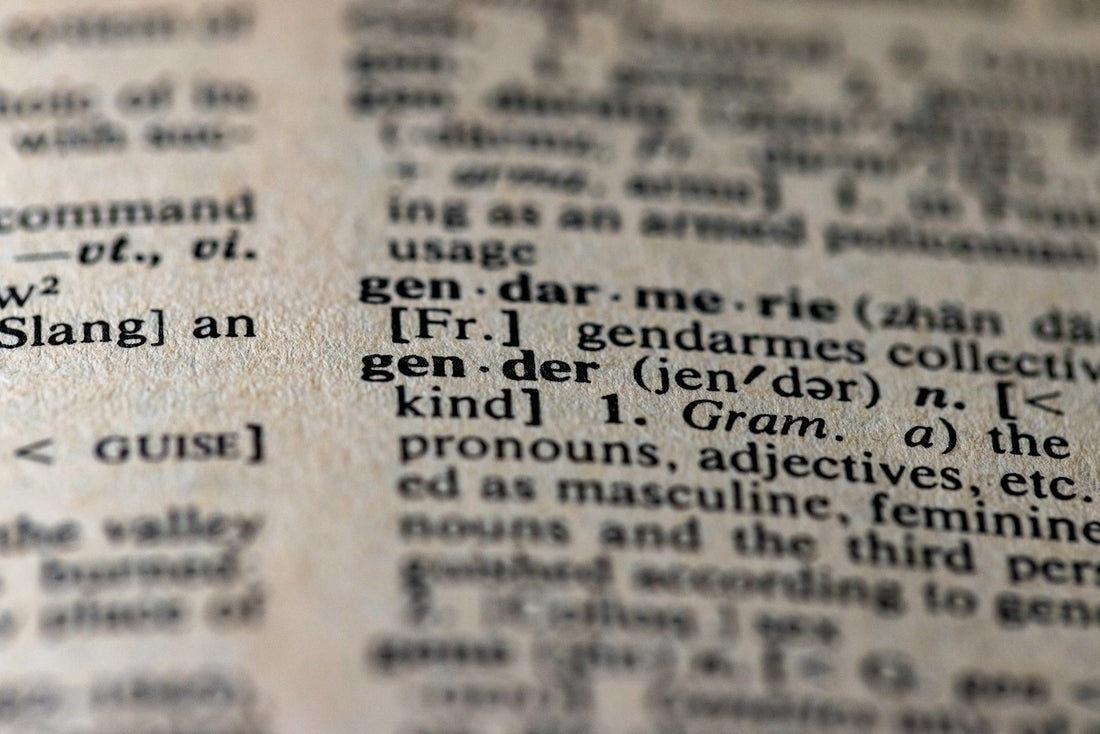
Expanding the Conversation: A Glossary of Gender-Related Terms
Share
Language is powerful. The words we use shape how we see the world and understand ourselves and others. When it comes to gender, having the right vocabulary can open doors to empathy, understanding, and progress. At Gendefy, we’re all about challenging outdated norms and expanding the conversation. This glossary is your guide to thinking outside the binary box of male/female and embracing the spectrum of identities that make us human.
Let’s dive in and break down the terms that help define this ongoing evolution.
Sex
Refers to the biological attributes like chromosomes, hormones, and reproductive anatomy typically categorized as male, female, or intersex. However, even biological sex isn’t as binary as it’s often portrayed. For instance, intersex individuals are born with variations that don’t fit conventional definitions of male or female biology.
Gender
A social and cultural construct that refers to roles, behaviors, activities, and expectations society associates with being male or female. Gender is fluid, diverse, and far more expansive than the binary framework.
Gender Identity
How a person internally understands and experiences their own gender. It may align with the sex they were assigned at birth, or it may differ entirely. Gender identity is deeply personal and exists on a spectrum.
Gender Expression
The external presentation of one’s gender through clothing, behavior, hairstyle, voice, or other characteristics. Gender expression doesn’t have to align with societal expectations or one’s gender identity—it’s all about self-expression.
Nonbinary
An umbrella term for gender identities that don’t fit strictly into the categories of male or female. Nonbinary individuals may identify as a mix of genders, as no gender, or in a way that defies categorization entirely.
Genderqueer
A term similar to nonbinary that rejects rigid gender distinctions. It’s often used by those who feel their gender identity or expression falls outside traditional norms.
Transgender
Describes individuals whose gender identity differs from the sex they were assigned at birth. For example, someone assigned female at birth but who identifies as male, nonbinary, or another gender. “Trans” is often used as a shorthand.
Cisgender
Describes individuals whose gender identity aligns with the sex they were assigned at birth. For example, someone assigned male at birth who identifies as male. “Cis” is often used as shorthand.
Two-Spirit
A term used within some Indigenous cultures in North America to describe a person who embodies both masculine and feminine spirits. Two-Spirit identities are diverse and deeply tied to cultural and spiritual traditions.
Intersex
An umbrella term for individuals born with physical sex characteristics (like chromosomes, hormones, or anatomy) that don’t fit typical definitions of male or female. Intersex is a natural variation of human biology and is distinct from gender identity.
Agender
Refers to individuals who identify as having no gender or being gender-neutral. Agender people often see themselves outside the gender spectrum entirely.
Genderfluid
A term for individuals whose gender identity or expression shifts over time. Genderfluid people may feel more aligned with one gender some days and another gender on others—or none at all.
Androgynous
A style or presentation that blends or avoids traditional male and female expressions. Androgyny challenges the idea that certain traits or looks must belong to a specific gender.
Toxic Masculinity
A term that critiques the societal pressure on men to conform to traditional ideals of masculinity, like suppressing emotions, dominance, and aggression. Toxic masculinity is harmful to all genders, limiting emotional expression and fostering unhealthy behaviors.
Misgendering
Refers to using incorrect pronouns, names, or gender labels for someone, often unintentionally. Misgendering can be hurtful and invalidating, which is why respecting someone’s identity is so important.
Pronouns
Words used to refer to someone in place of their name, like “he,” “she,” or “they.” Many people share their pronouns to create a more inclusive space where everyone’s identity is respected. For some, pronouns might shift based on how they feel each day, and that’s okay too!
Gender Dysphoria
A sense of distress or discomfort that arises when a person’s gender identity doesn’t align with their assigned sex or societal expectations. While not all transgender or nonbinary people experience dysphoria, for some, it’s a significant part of their journey.
Gender Euphoria
The opposite of gender dysphoria, this term describes the joy, comfort, or happiness someone feels when their gender identity is affirmed—through clothing, pronouns, or other expressions.
Ally
An ally is someone who supports and advocates for the rights and well-being of a marginalized group they’re not a part of—in this case, individuals challenging traditional gender norms. Allies are essential for creating a more inclusive and understanding world.
Intersectionality
Coined by Kimberlé Crenshaw, intersectionality highlights how overlapping identities—like gender, race, class, and sexuality—interact to shape individual experiences. Gender cannot be understood in isolation from these other factors.
Why Words Matter
Language is constantly evolving, just like our understanding of gender. Using inclusive and accurate terms isn’t about being politically correct—it’s about respect and recognizing the diversity of human experience.
At Gendefy, we encourage you to keep learning and growing. Maybe you’ve heard these terms before, or maybe some are new. Either way, the goal is to inspire reflection and open-mindedness.
Join the Conversation
Gendefy is committed to fostering dialogue and breaking down barriers. Have questions about these terms? Want to share your perspective? Let’s keep the conversation going. Together, we can expand the vocabulary for understanding gender and embrace a world beyond the binary.
Your voice matters. Share your thoughts in the comments or check out our Tools for Change blog for more resources on challenging gender norms.
Ready to defy the status quo? Let’s redefine, celebrate, and grow—together.



